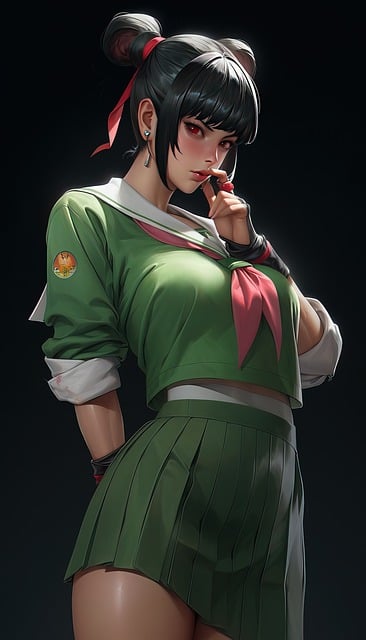The traditional karate uniform, known as a keikogi, is central to martial arts practice, reflecting both the functional needs for movement and the cultural respect for the art. Crafted from lightweight materials like cotton, it allows practitioners to execute techniques without encumbrance, lacking belts and pockets to maintain focus on skill and discipline. The keikogi symbolizes a karateka's dedication to the sport and is predominantly white, representing purity and freshness. Over time, the karate gi, which includes the jacket, trousers, belt, and often a headband, has evolved with regional variations, adapting to include colored belts for rank indication. Standardized by the International Karate Federation for consistency and safety, today's gi is lighter and more form-fitting than its ancestral qipon but retains its cultural heritage and facilitates the execution of karate techniques effectively. The keikogi's name, "karate uniform name," stands as a testament to discipline's enduring legacy, bridging karate's historical roots with modern practices while emphasizing the balance between respecting tradition and embracing innovation within the sport.
karate enthusiasts and practitioners often stand out with their distinctive attire, but have you ever wondered about the significance and history behind a karate outfit? This article peels back the layers to reveal the name and importance of the traditional karate uniform, known as the ‘Karate Uniform’. We’ll explore its components and evolution, providing insights into how this garb represents discipline and respect within the martial art. Join us as we delve into ‘Dressing for Discipline: The Components and Evolution of the Karate Gi’ and ‘Unraveling the Essentials: The Significance of the Karate Uniform’.
- Unraveling the Essentials: The Significance of the Karate Uniform
- Dressing for Discipline: The Components and Evolution of the Karate Gi
Unraveling the Essentials: The Significance of the Karate Uniform

The karate uniform, known as a “keikogi” in Japanese, is a fundamental component of traditional karate practice. This garment is designed for functionality and modesty, allowing practitioners to execute techniques with freedom of movement while also adhering to the cultural etiquette inherent in martial arts training. The keikogi typically features a jacket and pants made of lightweight cotton or a blend that facilitates ease of motion without being overly restrictive. It is characterized by its simple design, without belts or pockets, to avoid any distractions during practice or competition. The uniform is intended to provide a standardized attire that unifies practitioners, emphasizing skill and discipline over personal fashion statements. Understanding the keikogi’s role in karate training is crucial for anyone interested in the sport, as it is more than just a garment—it symbolizes the dedication and respect every karateka should have for the art. When selecting a keikogi, karate enthusiasts should opt for one that meets the standards of their dojo or the specific requirements of their karate organization to ensure proper practice and respect for the tradition. The color of the uniform can also vary, with white being the most common, symbolizing purity and freshness, but other colors may be used according to rank or personal preference. Whether for a casual class or a formal grading, the keikogi is an essential element that sets the stage for karate practice, ensuring that every movement is performed in a manner true to the art’s rich heritage.
Dressing for Discipline: The Components and Evolution of the Karate Gi

The karate uniform, commonly referred to as a gi, serves as a tangible representation of the discipline and tradition inherent in martial arts practice. This garment is emblematic of the respect for self, opponent, and art that underpins the ethos of karate. The traditional gi consists of a jacket, trousers, belt (obi), and often a headband (juban). Over time, the design of the gi has evolved to optimize functionality while maintaining its symbolic attributes. Historically, the materials and cuts varied across different regions and schools of karate, with early designs incorporating belts of various colors to indicate rank. Today, the international karate federation has standardized the dimensions and materials for competition gis, ensuring uniformity and safety during practice and tournaments. The top, or jacket, typically features a closed collar and is fastened by buttons or ties down the front. It is designed to allow for a full range of motion, enabling practitioners to execute techniques with precision. The trousers are straight-legged and similarly constructed to facilitate movement and provide durability.
The evolution of the karate gi reflects both cultural significance and practical adaptation over the years. Originally, the garment was based on the Chinese martial artist’s qipon, which was a heavy and loose robe. As karate spread from Okinawa to other parts of the world, the design underwent modifications to accommodate different climates and styles of karate. The modern gi is lighter, thinner, and more form-fitting than its predecessors, making it suitable for year-round training. The standardization of the gi not only ensures that practitioners can train together regardless of their origin but also upholds the martial art’s rich history and traditions. The karate uniform name remains a testament to the enduring legacy of this discipline, symbolizing the harmony between past and present within the practice of karate.
In conclusion, the karate uniform, commonly referred to as a gi, is not merely a garment but a symbol of discipline and respect within the martial art of karate. Its design and components have evolved over time, reflecting both the practical needs of the practice and the cultural significance of the sport. Understanding the karate outfit’s name and history enhances one’s appreciation for the tradition it represents. Whether practicing for personal development or competing at high levels, the gi remains an integral aspect of the karate experience, embodying the essence of the martial art’s principles and traditions.
